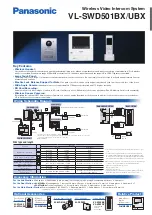
Automation Components, Inc.
2305 Pleasant View Road | Middleton, WI 53562
Phone:
1-888-967-5224 |
Website:
workaci.com
Page 2
Version: 6.0
I0000586
FIGURE 2:
WIRING
Note:
The ARM2 does NOT isolate the input signals from the
output signals. Use the Analog Isolation Module (AIM1, AIM2)
if you need to isolate the input signals from output signals.
FACTORY CALIBRATION
The ARM2 is set as follows:
• No Attenuation to the Input Signal
• Voltage Input Signal
• Current Output Signal
• Normal Acting Output Signal
• No Offset to the Output Signal
• Gain of 1 to the Output Signal (1:1). All four (4) pots should
be full counterclockwise (you can check them as they may
make a slight clicking sound at the end of their range).
The ARM2 can be ordered calibrated to your specifications or you may follow the procedure below to set
your own calibration.
Be sure to check the input, output, GAIN and OFFSET specifications of the ARM2. It is possible that the
ARM2 cannot re-scale to your requirements.
Calibration
Complete the following steps to change the calibration of the ARM2. You will need a digital volt/current
meter, a 24 VDC power supply and a voltage input signal simulator. (A 5K ohm or greater trim pot can be
used as a voltage input signal simulator by connecting one end of the trim pot resistance winding to the
(+) 24 of the power supply, the other end of the trim pot resistance winding to the (-) 24 of the power
supply and the wiper end of the trim pot to the “IN” terminal of the ARM2).
EQUIVALENT CALIBRATION VOLTAGE
Use a voltage signal for your input signal during calibration:
this makes both the procedure and the
explanation easier. If you will require a current input when you are finished, use the equation below to find
the equivalent calibration voltage to use during the calibration procedure:
Equivalent Calibration Voltage = Required Input Signal Amps x 250
Example:
1 VDC is the equivalent calibration voltage for a 4 milliamp input signal (1 = .004 x 250) or 5
VDC is the equivalent calibration voltage for a 20 milliamp input signal (5 = .020 x 250).
Step 1)
Trim Pot Presets:
Set all pots as follows to start (These are 25 turn trim pots with no hard stops; they may make a slight
clicking sound at either end of their
range):
Turn the following pots full counter
clockwise (25 turns):
GAIN = gain of 1
OFFSET = 0 volts offset
REV = 0 volts reverse
ATTN = (no input signal attenuation)
Step 2) Jumper Shunt Presets
J1- NORMAL OR REVERSE ACTING:
Set in “N” position for direct acting output signal. (If you require a
reverse acting output signal, you will set this shunt in the “R” position in Step 7).
J2 - OFFSET:
Set in the “O” position for no offset to the output. (If you will require a “+” or “-” offset, you will
set this shunt in the appropriate position in Step 6).
J3 INPUT - INCOMING SIGNAL:
Set in “E” position for voltage input . (If you require a current input, you
will set this shunt in the “I” position AFTER you are finished with the calibration procedure).
Step 3) Wiring Connections
Make the following connections with the power OFF.
Connect a 24 volt AC or DC power supply to the ARM2 terminals “PWR” (+) and “PWR” (-).
Connect the input signal common (-) to the “SIG IN” (-) terminal. Connect (+) input signal lead to the “SIG IN”
(+) terminal. To read input signal at ARM2 terminals connect (+) meter lead to the “SIG IN” (+) terminal and
the (-) meter lead to the “SIG IN” (-) terminal (or in parallel). To read mA signal on either output, connect the
meter in series with connections to the SIG1 and SIG2 output terminals. That is meter (+) to “SIG 1 or 2 OUT”
(-) terminal and meter (-) to wire going to device being controlled.
Step 4) Power Up
Turn on the 24 volt power supply: the POWER indicator will light.
Step 5) Input/Output Signal Adjustments
In this step you will figure the desired voltage input signal span and the desired current output signal span
(see the section on Equivalent Calibration Voltage) and calibrate the ARM2 to these input and output
signal spans.
Output 1 (+)
Signal Input (+)
+ IN -
SIG
+ -
PWR
+
PO
J2
OFFSET
O - +
PWR
L1
ACTION
J1
R
N
GAIN OFF REV
ATTN
+ OUT -
SIG1
+ OUT -
SIG2
PWR
J4
J3
I E
INPUT
DC AC
AUX Power Output (+)
Signal Input (-)
Output 1 (-)
(-) Output 2
(+) Output 2
24 VDC
24 VAC
Power
Supply
Loop
Powered
Sensor
(+) (-)
Set INPUT to
Current (I) for Loop
Powered Sensor
Input from 2-wire Current Loop
Powered Sensor
+ IN -
SIG
+ -
PWR
+
PO
J3
I E
INPUT
24 VAC/VDC
POWER SUPPLY


























